
© Tristram Kenton, courtesy the Royal Opera House. (Click image for larger version)
Royal Ballet
The Winter’s Tale
★★★✰✰
London, Royal Opera House
13 February 2018
Gallery of pictures by Foteini Christofilopoulou
www.roh.org.uk
The return of Christopher Wheeldon’s The Winter’s Tale in its third revival since 2014 brings newcomers to its many meaty roles. It also introduces new audience members to one of Shakespeare’s late plays, with its convoluted plot. It helps if you’ve boned up on the story in advance, even though Wheeldon and his collaborators have done their utmost to make it clear. (The woman sitting next to me kept trying to read the detailed synopsis during the action – not possible in the dark.)
A helpful prologue spells out the prequel to Act I. Two children, surrounded by black-clad mourners, grow up to be kings. Leontes, King of Sicilia, marries Hermione, who is also greatly admired by Polixenes, King of Bohemia. She has had one child, Mamillius, and is about to have another as we join the plot for the ballet proper.
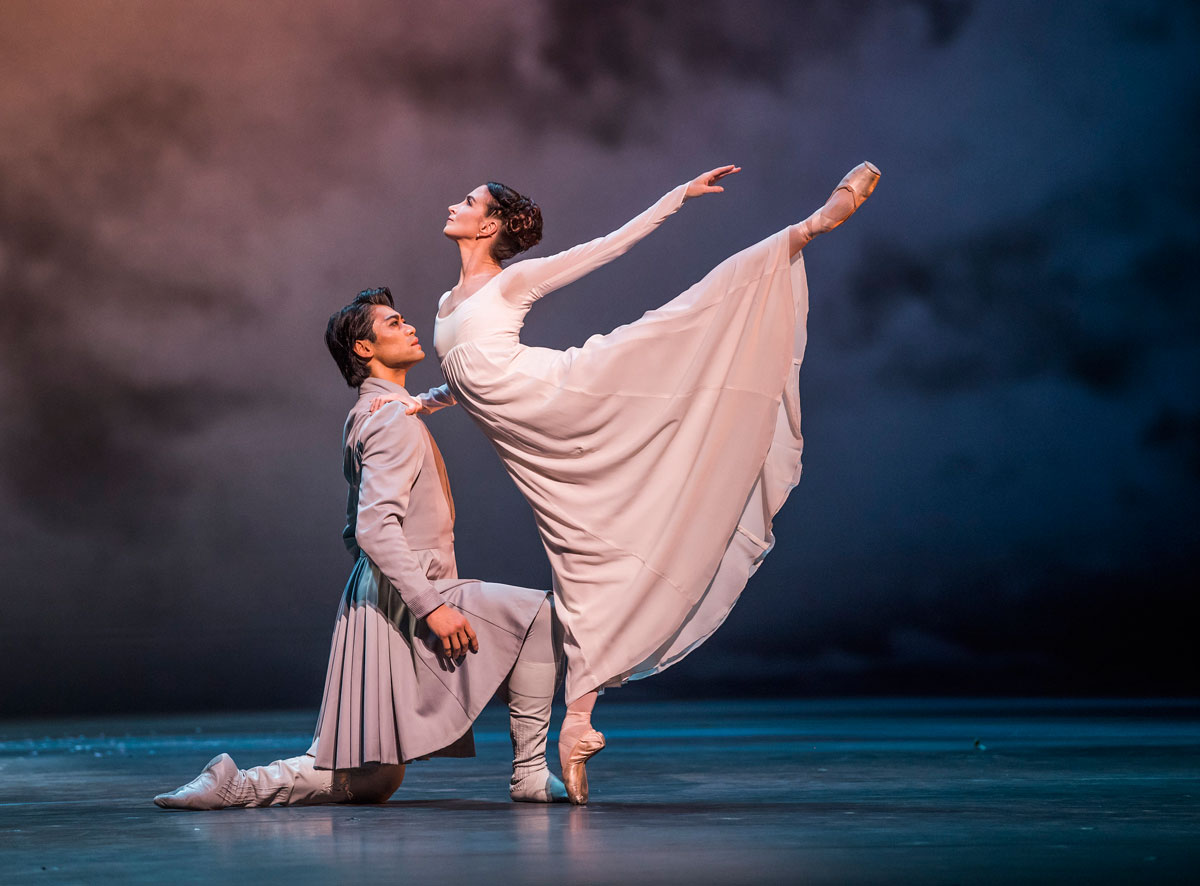
© Tristram Kenton, courtesy the Royal Opera House. (Click image for larger version)
The pregnancy seems better managed than in earlier revivals. Hermione (Lauren Cuthbertson, reprising her original role) is encouraged to sit down rather than carry on cavorting in the court revels. Polixenes (Matthew Ball) has outstayed his nine-month visit and seems over friendly with Hermione and her son. Leontes (Ryoichi Hirano) is given evident cause for the suspicion that overwhelms him. Hirano’s face darkens ominously as he sees Ball’s Polixenes place his hand on Cuthbertson’s prosthetic bump. He gazes into his little son’s face, seeking proof of paternity.
Hirano ‘s succumbing to jealousy is less psychotic than Edward Watson’s portrayal, but equally alarming when he resorts to violence, losing all dignity. In Shakespeare’s play, Leontes resorts to crude sexual slurs about his wife’s behaviour; in the ballet, erotic statues are turned around to inform the audience of his deluded imaginings. Wheeldon could have trusted his dancers to convey their emotions through his vivid choreography without resorting to statuary that appears moulded out of soap.
Cuthbertson is all wounded innocence as Hermione, betrayed by her loving nature. Her appealing solo, spinning in bewilderment at the false charges against her in her trial, lacks any indication that she has been deprived of her new-born baby. Surely her arms would crave to nurse it? Wheeldon has given Hermione less range of feeling than Paulina, her confidante, who emerges as the most interesting character in the ballet. Laura Morera, a consummate actress, makes Paulina into an avenging angel with a barely controlled temper.
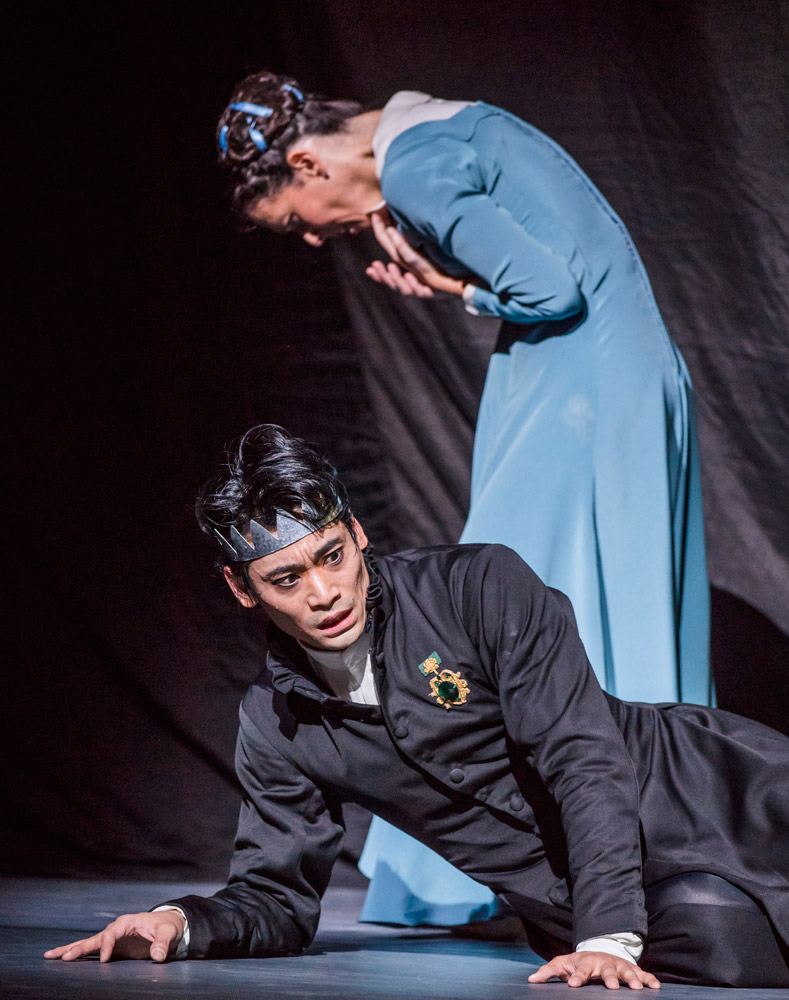
© Tristram Kenton, courtesy the Royal Opera House. (Click image for larger version)
She beats up Leontes for his assault on his wife, causing Hermione’s collapse and the death of their horrified son. She slaps Leontes repeatedly about the face before hastily remembering he’s a king. She will show him no mercy, ensuring that he is crippled with guilt for years to come, even though she has secreted Hermione away, still alive. Paulina’s put-open husband, Antigonus (Bennet Gartside, excellently sympathetic) has been killed by a bear while leaving the baby on a far-off shore.
The bear effect on a swathe of silk has no fewer than four credits in the programme, even though it’s scarcely visible from some parts of the auditorium. The abandoned baby waves its arms and legs, thanks to puppeteer Basil Twist, also part responsible for the bear.
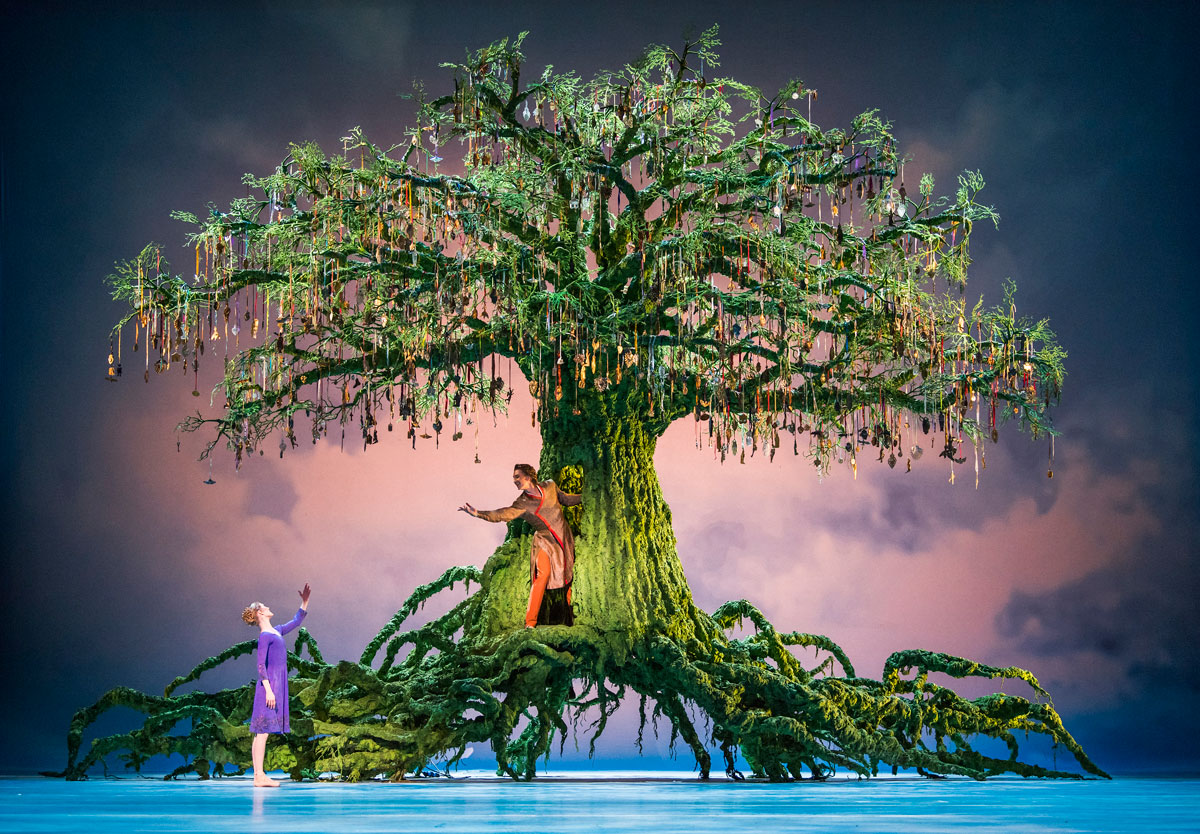
© Tristram Kenton, courtesy the Royal Opera House. (Click image for larger version)
Act II’s decor, a splendid Wishing Tree by Bob Crowley, is applauded by the audience in relief that colourful spring has banished dark winter. Sarah Lamb is vivacious and quixotic as Perdita, the lost princess who has been brought up in a peasant community. We’re in Giselle territory, with Prince Florizel, Polixenes’ son, passing himself off as a shepherd. Perdita knows his true identity, though she doesn’t know her own. Vadim Muntagirov is elegant and charming as the disguised prince in his virtuoso variations, in spite of a truly appalling costume. Florizel and Perdita disport themselves merrily in the multiplicity of folk dances, with skips, flexed feet and tucked up lifts to show the difference from the court dances in Act I. Both celebrations are punctuated with loud cries of ‘Hey’. Why?
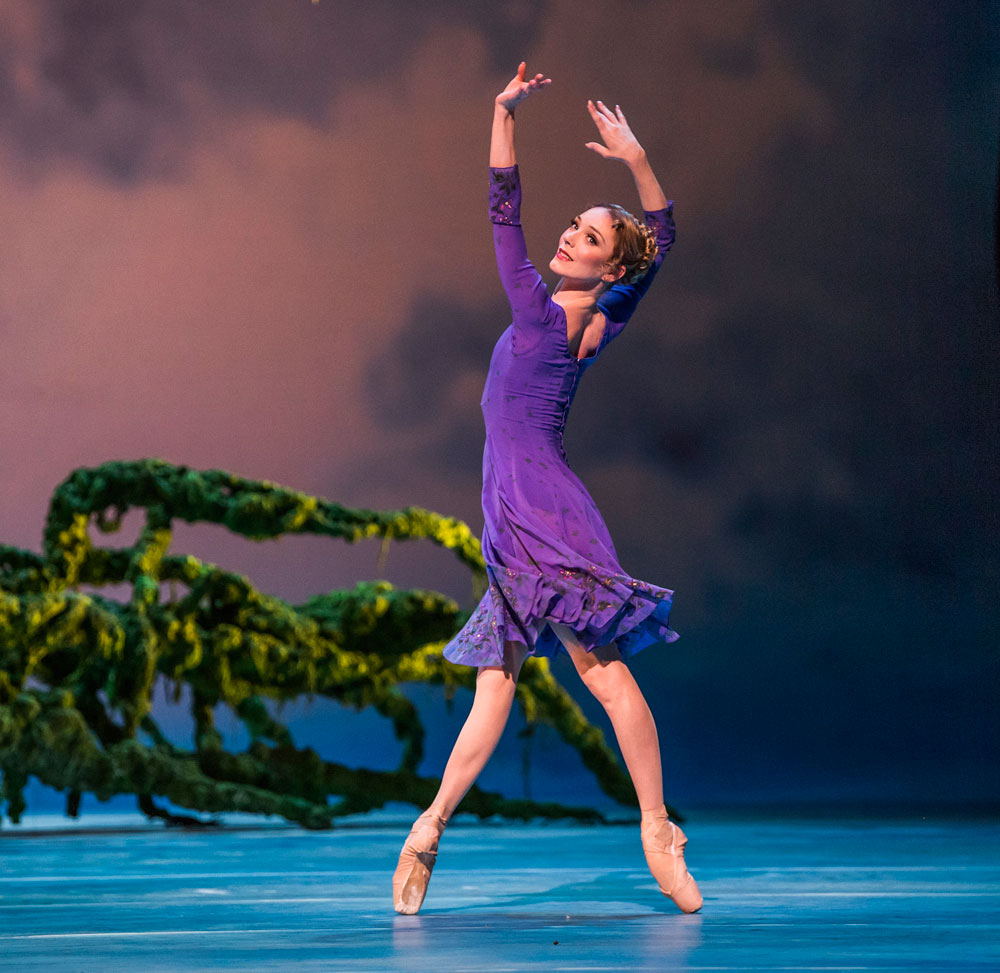
© Tristram Kenton, courtesy the Royal Opera House. (Click image for larger version)
The plot has stalled during an excess of dancing, including a Peasant pas de deux for Beatriz Stix-Brunell and Marcelino Sambé, both ebullient. Eventually, Polixenes reveals himself as another enraged father, putting an end to his son’s love affair. The couple flee via a gangplank signifying a voyage aboard yet another projected ship: journeys are very literally sign-posted in Wheeldon’s scenario.
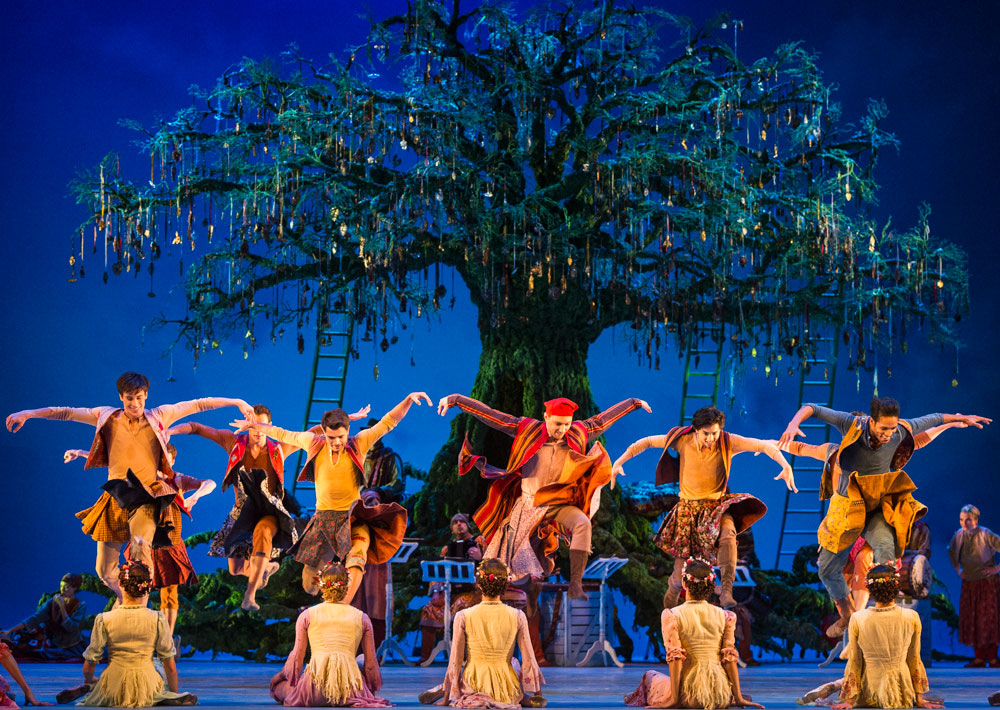
© Foteini Christofilopoulou, courtesy the Royal Opera House. (Click image for larger version)
Act III brings the two parallel worlds together in a final reconciliation. The act really belongs to Paulina, who encapsulates Shakespeare’s themes of repentance and forgiveness, love and death, dark and light, in expressive choreography. After torturing Leontes by insisting on his sins for 16 years, she has to bring herself to respect and forgive him, as Hermione does. In Paulina’s solo, Morera strives to control her own grief and resentment in the graphic gestural language that Wheeldon has invented for the role. Her struggle to accept her conflicting emotions outshines Hermione’s reunion with her husband and daughter, less perfunctory in the ballet than in the play. The closing image is of Paulina, folded in mourning before a hideous memorial statue of Mamillius, her arms curved like angels’ wings.
It’s an affecting end to a ballet that manages to be both solemn and joyous, without being as broken-backed as the play. Joby Talbot’s assertive score describes the action and dictates the tone of each scene, while providing stimulating rhythms for the dances. Changing casts will seize on the opportunities to investigate the principal and supporting roles, while the corps can rejoice in ensemble dances that aren’t as regimented as those in this season’s Giselle. The Winter’s Tale is already being welcomed as a potential classic wherever it has been performed by the Royal Ballet or the National Ballet of Canada, its co-producer. But does it succeed in moving audiences to tears, as Giselle can?














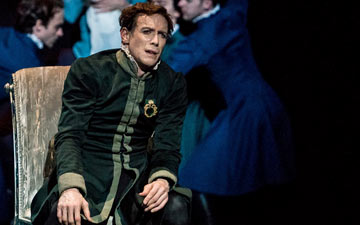
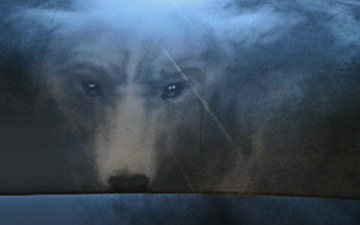
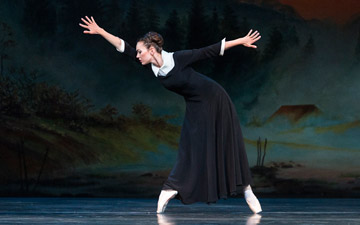
I personally cry every time I watch this ballet! I do feel this review is a little harsh in some places, but everyone’s entitled to their own opinions! 🙂